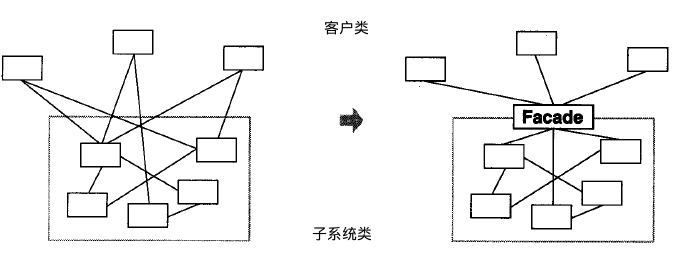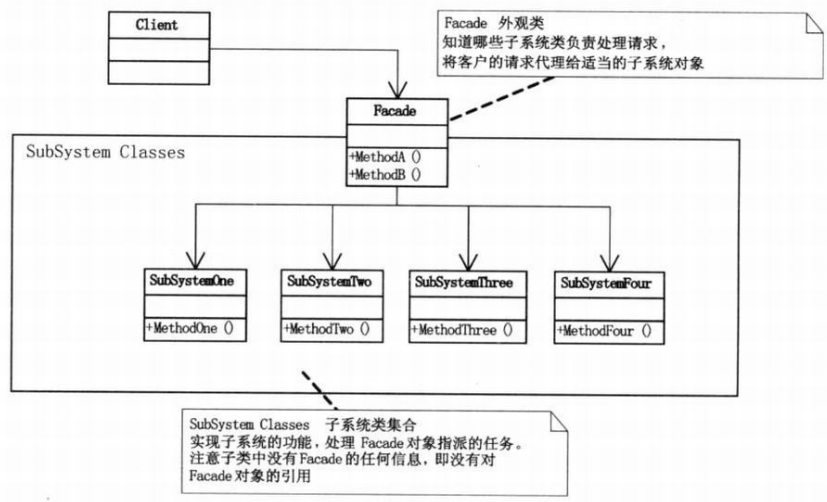为子系统中的一组接口提供一个一致的界面, Facade模式定义了一个高层接口,这个接口使得这一子系统更加容易使用。将一个系统划分成为若干个子系统有利于降低系统的复杂性。一个常见的设计目标是使子系统间的通信和相互依赖关系达到最小,它为子系统中较一般的设施提供了一个单一而简单的界面。

1.模式适用性
- 当需要为一个复杂子系统提供一个简单的接口时
- 当需要减小子系统间的相互依赖时,可使用facade模式简化依赖关系
- 维护遗留系统难以扩展时,使用facade模式简化遗留系统的使用
2.模式结构
(1)Facade:作为子系统的统一接口,知道哪些子系统负责处理请求,并将客户的请求代理给适当的子系统对象处理
(2)Subystem classes(SubSystemOne,SunSystemTwo等):实现子系统的功能,处理由Facade指派的任务
3.实现
#include <iostream>
using namespace std;
class SubSystemOne
{
public:
void MethodOne()
{
cout << "Sub one function" << endl;
}
};
class SubSystemTwo
{
public:
void MethodTwo()
{
cout << "Sub two function" << endl;
}
};
class SubSystemThree
{
public:
void MethodThree()
{
cout << "Sub three function" << endl;
}
};
class SubSystemFour
{
public:
void MethodFour()
{
cout << "Sub four function" << endl;
}
};
class Facade
{
private:
SubSystemOne *one;
SubSystemTwo *two;
SubSystemThree *three;
SubSystemFour *four;
public:
Facade()
{
one = new SubSystemOne();
two = new SubSystemTwo();
three = new SubSystemThree();
four = new SubSystemFour();
}
void MethodA()
{
cout << "***Function group A***" << endl;
one->MethodOne();
two->MethodTwo();
three->MethodThree();
}
void MethodB()
{
cout << "***Function group B***" << endl;
four->MethodFour();
one->MethodOne();
}
};
int main(int argc, char *argv[])
{
Facade facade;
facade.MethodA();
facade.MethodB();
return 0;
}
